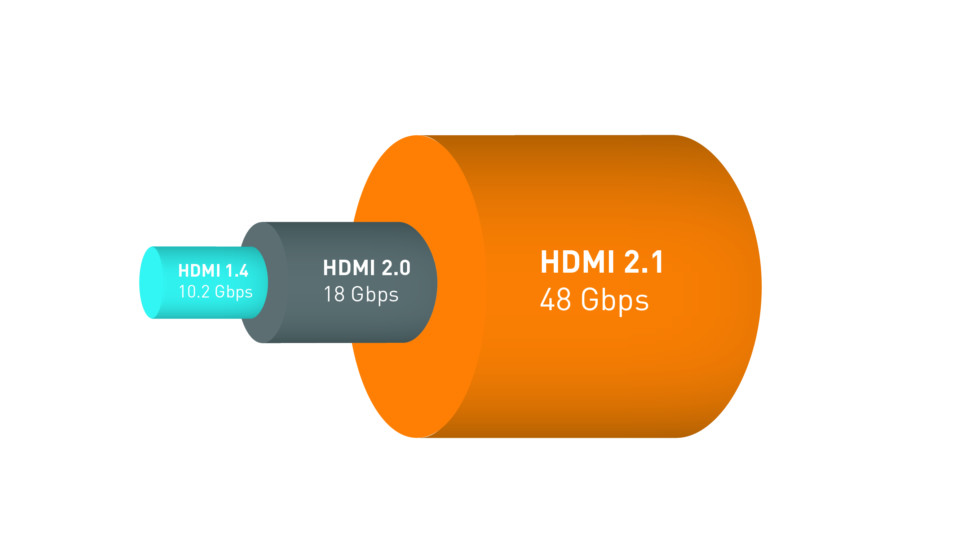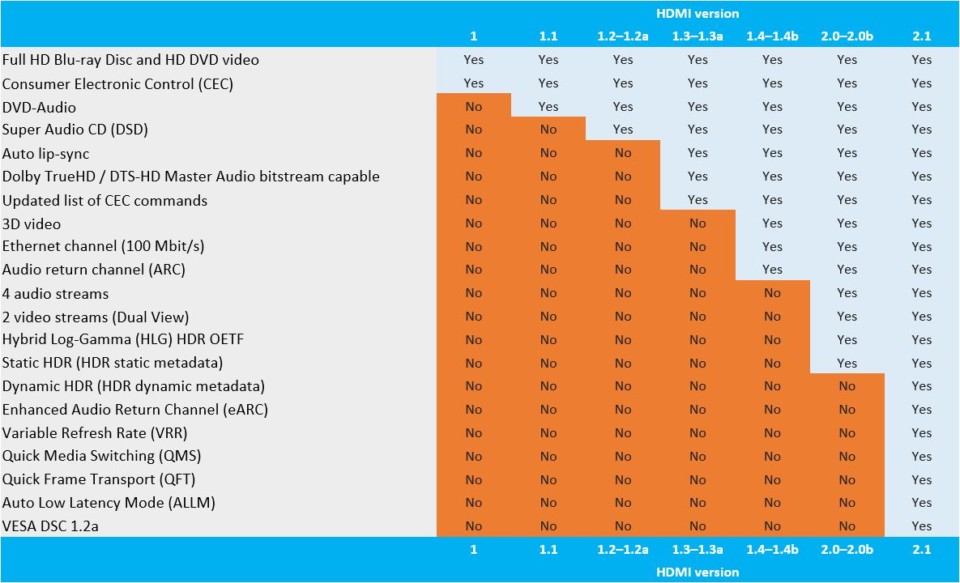“48Gbps and nothing on”
HDMI 2.1 specification offers much higher bandwidth capability (up to 48Gbps) than HDMI 2.0b (18Gpbs). This higher bandwidth allows support a range of higher video resolutions and refresh rates including 8K@60 and 4K@120, and resolutions up to 10K. While this sounds great on paper, there are several major catches.
There are plenty of sports cars that can do 200mph but does this capability really matter if the speed limit is 75?
Just because a display can support 48Gbps doesn’t mean that there will be any high-res/ high-frame rate content available anytime soon to utilize this capability. There are major challenges in creation, and distribution of 8K@60 and 4K@120 content that will need to be overcome before you can take advantage of the 48Gbps bandwidth capability of those fancy HDMI 2.1 inputs.
- The capacity of current physical media (UHD Blu-ray) isn’t high enough to support a full-length movie using current compression technologies.
- While several HDMI 2.1 equipped displays were shown at CES 2019, there wasn’t a single playback source officially announced that would support either 8K@60 or 4K@120. With companies like OPPO and Samsung ending 4K Blu-ray player production and the ever-shrinking market for physical media, the odds of a 8K disc player appearing in the near future is slim to none.
- No one is rushing to create content. Studios are in no hurry to shoot major films at these resolutions/frame rates due to the production cost. Just the amount of HDD storage required is a deal breaker for most filmmakers. Even if a studio had the cameras and production capability, the limited amount theater distribution opportunities would hamper their enthusiasm.
- If someone did create the content, distribution is also a challenge. Just look at how slowly 4K broadcast is being adopted. Broadcasters, and streaming services just don’t want to allot required system bandwidth. Major providers believe that providing several channels instead of one high res/ high bandwidth channel is a better business model.
Maybe some manic in the future will build a mega gaming PC that would support 8K@60 and 4K@120 but it would cost the price on a small BMW. So, if only the most hardcore PC gamers will able to take advantage of the higher bandwidth, do the other improvements provided by HDMI 2.1 still make this feature a must have?
In addition to higher bandwidth, the HDMI 2.1 specification requires support for the following notable ehancements:
- Dynamic HDR - Scene-by-scene or even a frame-by-frame metadata is included in the signal. This ensures that ultra-bright highlights are not blown out while maintaining a higher APL (average picture level). Dynamic HDR is already available via Dolby Vision and HDR10+.
- eARC - Standard HDMI ARC supports multi-ch audio including Dolby Atmos, but due to bandwidth limitations, it delivers a compressed audio signal for example Dolby Digital Plus. The increase bandwidth capabilities of eARC allows the transfer of uncompressed audio like Dolby TrueHD for the highest sound quality.
- VRR (Variable Refresh Rate) - The frame rate outputted by the video source determines the refresh rate of the display. In other words, display waits to draw the next image until it receives a new frame from the source. Variable refresh rate eliminates or greatly reduces the problems caused by mismatched frame and refresh rates when video gaming such as lag, stutter and frame tearing.
- ALLM (Auto Low Latency Mode) - When a PC or gaming system is detected the display will automatically switch into its game mode allowing for a smooth, lag-free gaming experience.
It is important to note that while the features above are a required part of HDMI 2.1, it doesn’t mean a HDMI 2.0b equipped source/display cannot support them. In fact, many AVRs (Denon, Marantz), TVs (Sony, Samsung) and game systems (Xbox) already support the features listed above.



